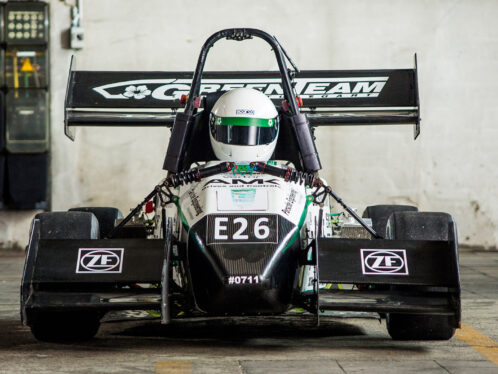
Look – no hands!
Autonomous cars may spell the future for the global car industry, radically changing automobile travel. Swedish automaker Volvo Cars is aiming to let its customers take their hands off the steering wheel in the company’s hometown, Gothenburg.
Commuters reading the paper, writing emails or watching a video are familiar sights in Gothenburg, but you don’t usually see people doing these things in the driver’s seat of a car. That’s set to change.
In 2017, Swedish automaker Volvo Cars’ Drive Me project will equip the first 100 cars with its autonomous car technology for selected customers, allowing them to cruise around in Gothenburg traffic in autonomous vehicles.
“We already have autonomous Volvos on the road today, but this is a full-scale live test with real customers,” says Marcus Rothoff, director of Volvo Cars’ Autonomous Driving Programme. “In 2020 we hope to start putting autonomous cars on the market.”
Autonomous driving is all the rage in the global vehicle industry at the moment and has been labelled the greatest change since the introduction of the internal combustion engine. Experts believe it will have a major impact on both car manufacturers and consumers and eventually on the traffic system itself.
The biggest change, however, may be in how we perceive travel.
“For us, this project is about giving time and freedom back to the customers,” says Rothoff. “Time is the most valuable thing we have, and it shouldn’t be wasted in congested commuter traffic or simple highway driving. In the US people spend on average 26 minutes a day commuting, and it is this time that we want to give back to them.
“Safety is another crucial aspect,” Rothoff says. “We believe autonomous driving can drastically improve safety.”
Self-driving cars come in different versions, and Volvo’s is what is known in the industry as Level 4 autonomy, where the car does the driving in certain designated parts of the traffic system, and the driver can take over the car outside those sections or if adverse weather or road conditions call for it.
Volvo uses radar, cameras, sensors and lasers to register everything around the car, the road and other vehicles in order to let sophisticated software take command of the driving. If the driver needs to take over, a safe handover can take place either while the car is moving or while it is at a standstill at the side of the road.
“In bigger cities a large part of the road network is likely suitable, exceptions being small roads and very dense city traffic,” says Rothoff.
A big concern for car manufacturers and insurers has been who is actually responsible for an autonomous car in the case of an accident. Volvo has tackled this issue by pledging full responsibility for the vehicle while it is in autonomous mode.
“There can’t be any grey areas when it comes to responsibility, and we are very confident about the safety of our technology,” says Rothoff.
With safety at the top of the agenda, Volvo has its sights on an impressive goal: that the end of the decade will see zero deaths or serious accidents in new Volvo cars – something autonomous driving will help realize.
British market research firm Juniper predicted in a report from December 2015 that autonomous cars will come onto the market in serious numbers by 2021, and that by 2025 there will be a rolling stock of around 20 million autonomous vehicles globally. Like Volvo, Juniper sees demand driven by the desire for increased comfort and safety, and North America and Europe as the initial key markets.
In the report, Volvo is dubbed the second most important player in the autonomous car segment after Google, which is developing fully autonomous cars – so-called Level 5 autonomy – designed to do away with the need for a driver completely. The ranking is based on technology, performed road tests and size of the project.
One important factor in autonomous cars is getting drivers and passengers to actually trust the car when it is in autonomous mode. This is crucial in order for customers to buy the cars and subsequently to realize the cars’ full potential.
“If you don’t trust the car, you can’t relax and use that free time for something useful,” says Rothoff. “Then an important aspect is lost.” It will take some time and effort to get there, he says, but the past few years have seen the introduction of other autonomous features such as braking and assisted parking. “We believe these have cleared the path for a fully autonomous car,” he says.





